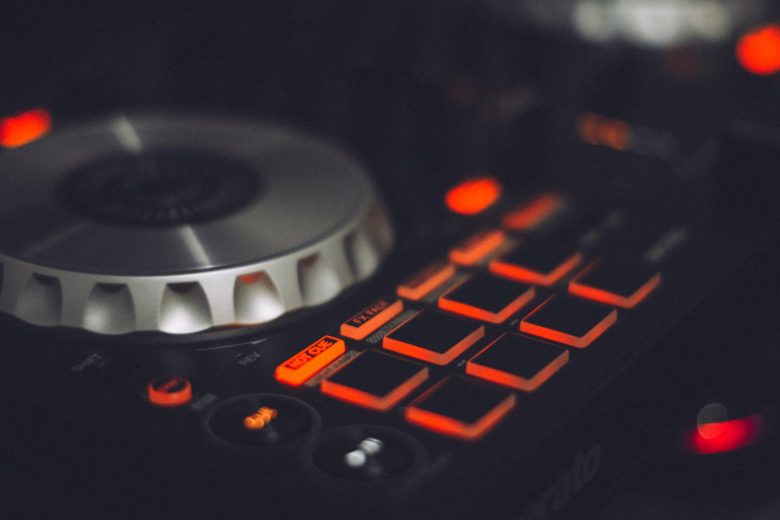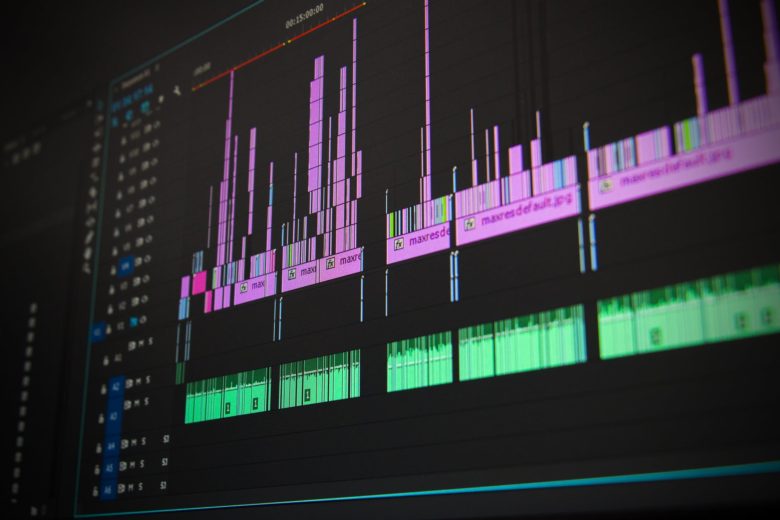Music has vastly been used as a form of self-expression, a means to communicate, transcending time, and multiple barriers. With so significant a role to fill, it only makes sense that its evolution matches up to the changes we see in ourselves. Technology has made radical transformations in how we listen to and make music.
From consumption to production, technology has had sweeping changes in the music industry. What used to be a mostly analog experience has gone almost exclusively digital. DJs with their laptops have replaced rockstars with their guitars in the popular imagination. And songs are now almost exclusively produced on digital audio workstations, not analog tapes.
1. How We Listen To Music

Img source: pexels.com
The most considerable technological changes that have occurred within the music industry are reflected in the way we listen to music. It can be traced back to times when music could only be enjoyed live, to the records era, and then cassettes and CDs, and finally streaming services. During the analog media reign, people had to purchase the albums and recordings to listen to the music of their favorite artists.
The consumers had to walk into the music stores, search for the music collections, and then leave stores giving the owners money. But these albums were not suitable for easy transportation for personal use because you could not carry a player with you everywhere. From gramophones to smartphones, our listening experience has come a long way, and that’s all thanks to strides in technology.
Some digital distribution services require premium membership access and you may need help paying for that.
· Music on the Move
In the early 90’s the vehicles used to have CD players and Walkman players which were used by the consumers. The listeners had to pop in the cassettes into the players and then list to their favorite music. The CD players offered more space for the users to listen to songs in greater quantity because the memory of CDs was more than the cassettes. By the time the artists of the music industry were able to expand their music influences very quickly and independently.
· The Era of YouTube and iTunes
The battle of musicians, music companies, and producers is its place, and still, we are left with some options such as YouTube and iTunes. Technology has changed the method by which we have been listening to music over the ages.
There are numerous other websites apart from YouTube, such as Vimeo, Deezer, and Soundcloud, etc. which are very popular for streaming music. These offer a unique way of operation that permits the listener to put the request of any artist or music. Websites will then build up a radio station based on the request of the users and will then feature the artist and musician of the specific genre of music. Some of these websites include:
- Pandora
- Spotify
- Soundcloud
- iHeart Radio
- iTunes Radio
- Milk Music
2. The Way Music Is Made

Img source: pexels.com
Any imperfections can smoothly be edited out in music production by auto-tuning, a feature used by many artists. Recording studios have undergone creative modifications, and you’ll seldom walk into an instrument filled room.
What you’re more likely to encounter is a state of the art padded room with minimal equipment as most things have become digitized. There’s no need for actual musical instruments as these can quite easily be imitated by technology. Check out couponlawn.com for the best deals on audio equipment and DJ gear.
Where music used to be judged based on the artist’s talent, nowadays, extra nuances involving technological expertise have become potentially more critical in building an artist’s popularity. Tracks are produced more quickly, with consumers hungry for new content.
With the ease of production, artists are releasing more music at a faster pace than ever before. Some people argue, however, that this is spewing music that all sounds the same.
Image matters. With focusing on shifting from traditional talent, the only way for artists to stand out is to deliver mind-blowing visuals. Recording has become so easy that anyone can record studio-quality music in their bedroom studio on a laptop with music software.
The music industry is no longer centered around ownership – it’s about being able to access the music anytime, anywhere.
3. New Genres Emerging

Img source: pexels.com
Fresh, new sounds based solely on tech are becoming popular. Anodic music relies on electronic instruments to produce sounds traditional instruments wouldn’t be able to. Electronica, K-Pop, ‘Chillstep’ are all examples of synthetic sounds and effects that are gaining popularity. As a result, creative collaborations no longer know borders and are burgeoning every day.
More credit is being afforded to DJs whose sets owe their success to advances in tech. Mixologies, remixes, and sound manipulation are becoming essential skills to master for anyone hoping to make it musically. Inevitably, there’s a growing gulf of mutual incomprehension and contempt separating the generations on matters of music. The older generation is likely to ask youth, “What is that loud noise” – lacking the range to appreciate the new sounds we’re coming up with daily.
4. Music Distribution is Going Online

Img source: pexels.com
The most significant phenomenon in music of late is the emergence of so-called “cloud rappers.” This is a broad term for hip-hop artists who began their careers releasing their tracks on SoundCloud. SoundCloud’s massive reach enabled them to grow an audience, which, in turn, helped them grab secure record label deals. Listeners also benefit from this process of cutting out the middlemen. For one, fans get to build deeper relationships with musicians. They can also buy individual tracks and albums for lower prices (since there is no record label to deal with).
Unimaginably large amounts of musical content have become available just at the click of a button. And with the speed of internet downloads, you can be jamming to your favorite artists within minutes of song releases. This is dramatically different from the times where new albums meant sleepless nights in front of stores to purchase CDs. Remarkably, this invention has seen to it that artists become accessible to listeners across the world.
Individually tailored streaming means we now exist in our individual bubbles of sound. “Unbundling” as a disruptive technology term, is the process where listeners gain access to specific content they want without being burdened with “packages” containing unnecessary bits. They have the autonomy to filter through music they’re not interested in and focus on either a particular genre or artist.
5. Content Delivery and Consumption

Img source: pexels.com
Audio technology isn’t only becoming immersive, but personalized too. Even with so vast a sea of picks to choose from, you can effectively customize your consumer experience. This has been made possible by various gadgets used to enjoy the music produced.
· Headphones
These serve as the perfect excuse for not engaging in small talk with your over-eager neighbor. For a ”party in your head” experience, plug one of these in, and you’ll be jamming away in no time. You could be listening to the same song, but the effect a good set of headphones offers an elevated experience, and the beat drops differently. Check out couponlawn.com for the latest deals on music gear.
· Holograms, Drones and VR Pop Stars
Even with all the technological advancements that have been made, many listeners agree that there’s nothing quite like a live experience. This is why artists have upped their game in live settings, putting the latest tech to use to deliver shows of a lifetime. Tech gurus have taken their inventions a step further and created ways to bring artists ‘live’ to you. The utilization of holograms means with manipulation of your computers; you can have a live performance at your doorstep.
Conclusion
Although we don’t have flying cars like the Jetsons predicted (at least not yet!), we can take comfort in the strides technology has made musically. It has revolutionized how we consume music, from creating mood playlists to machine learning algorithms, the streaming service has never been better.




